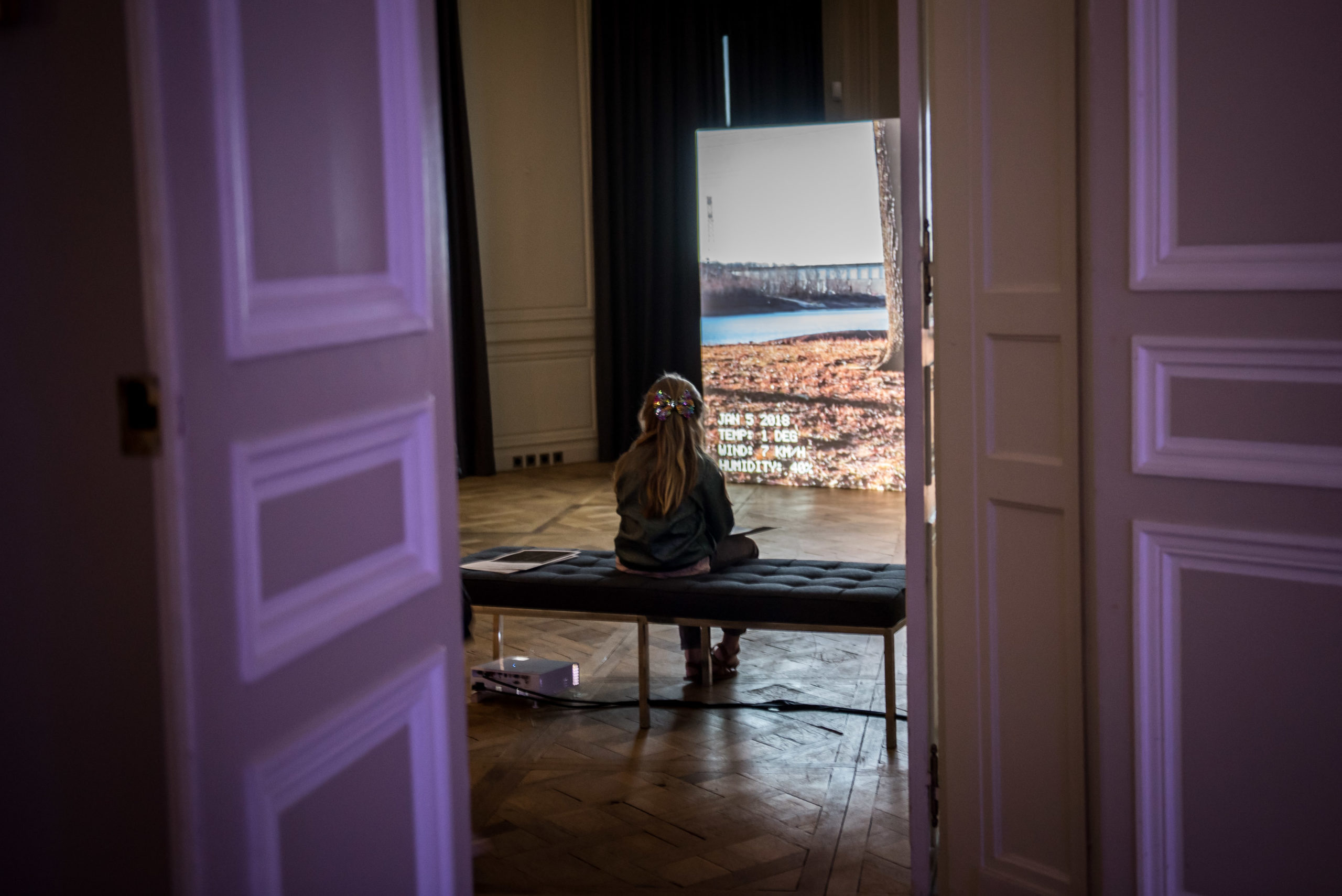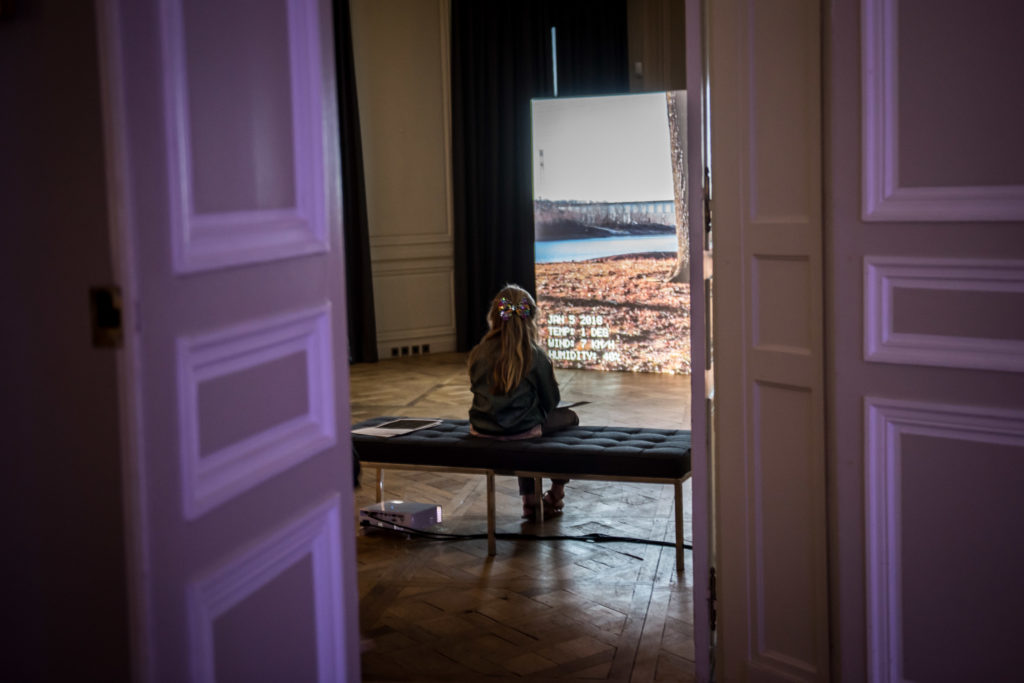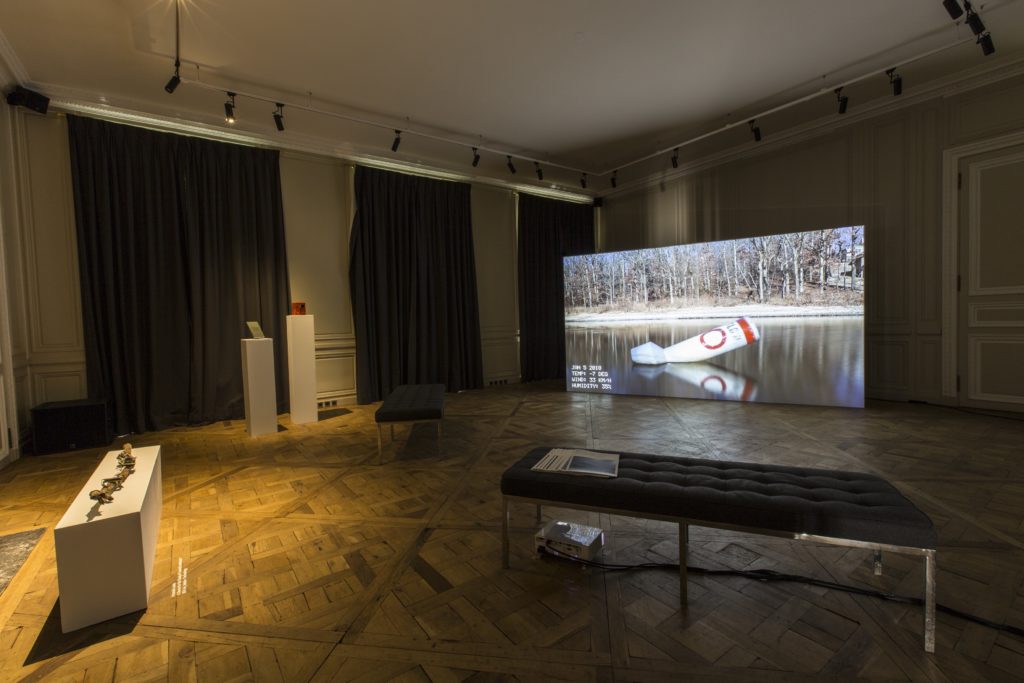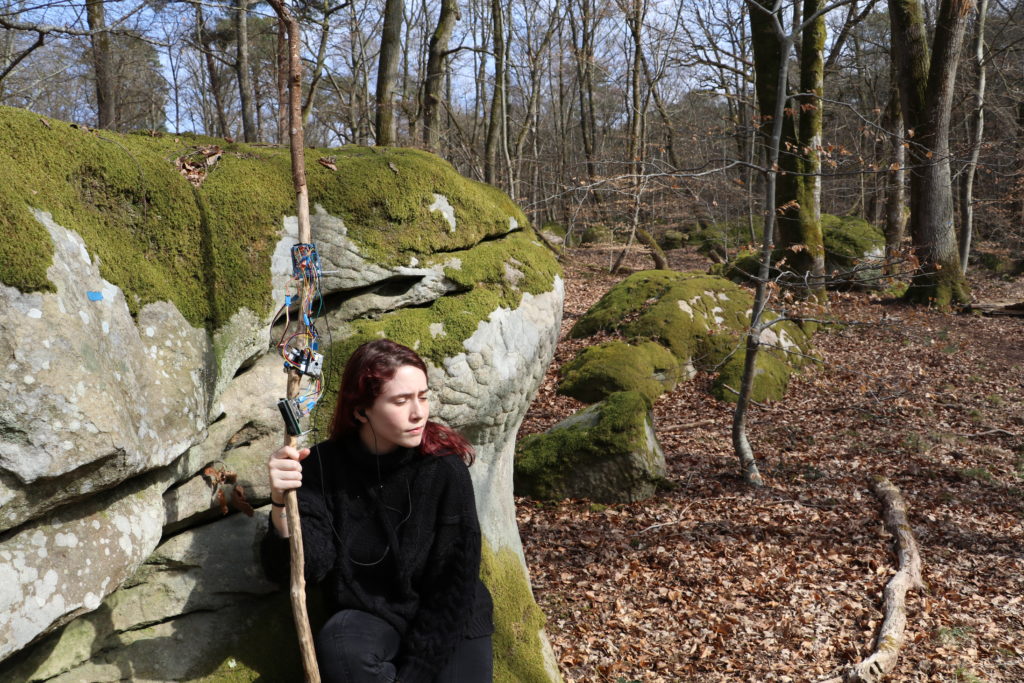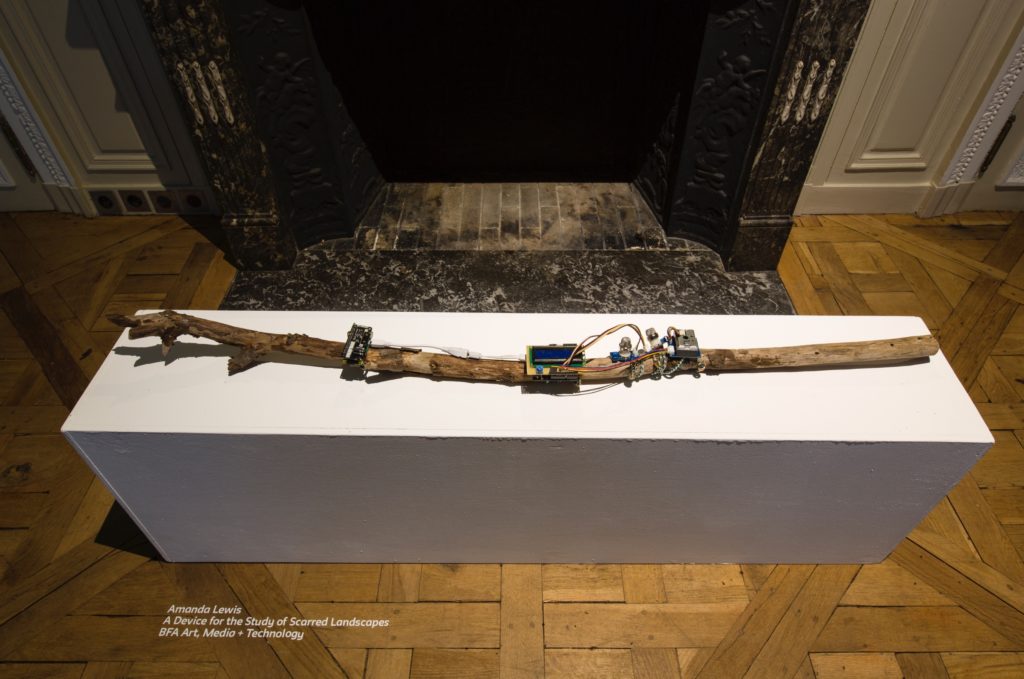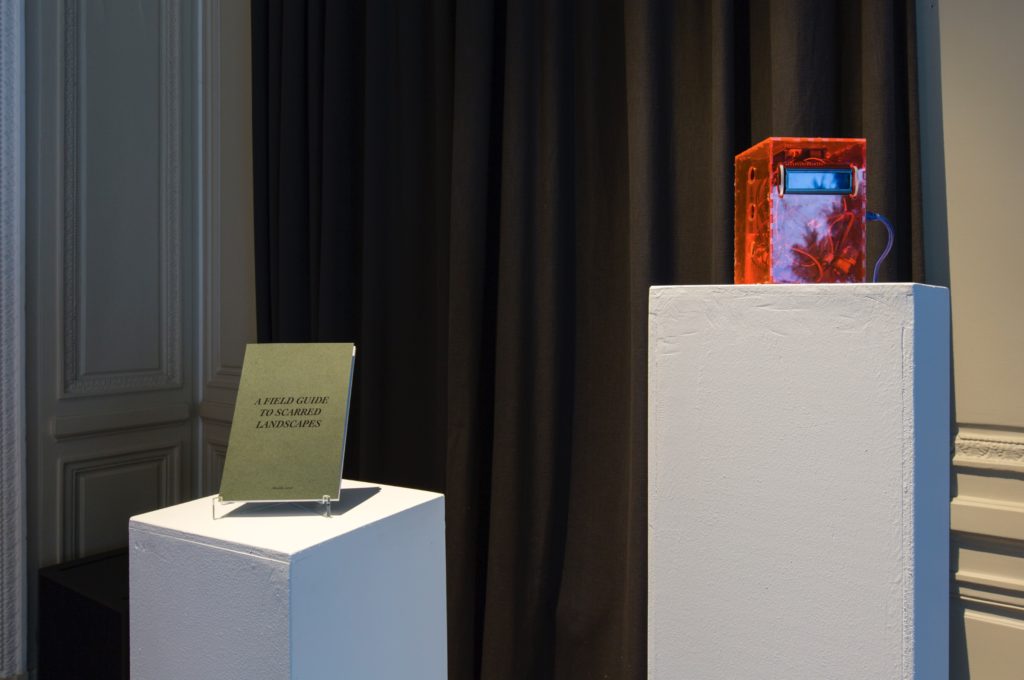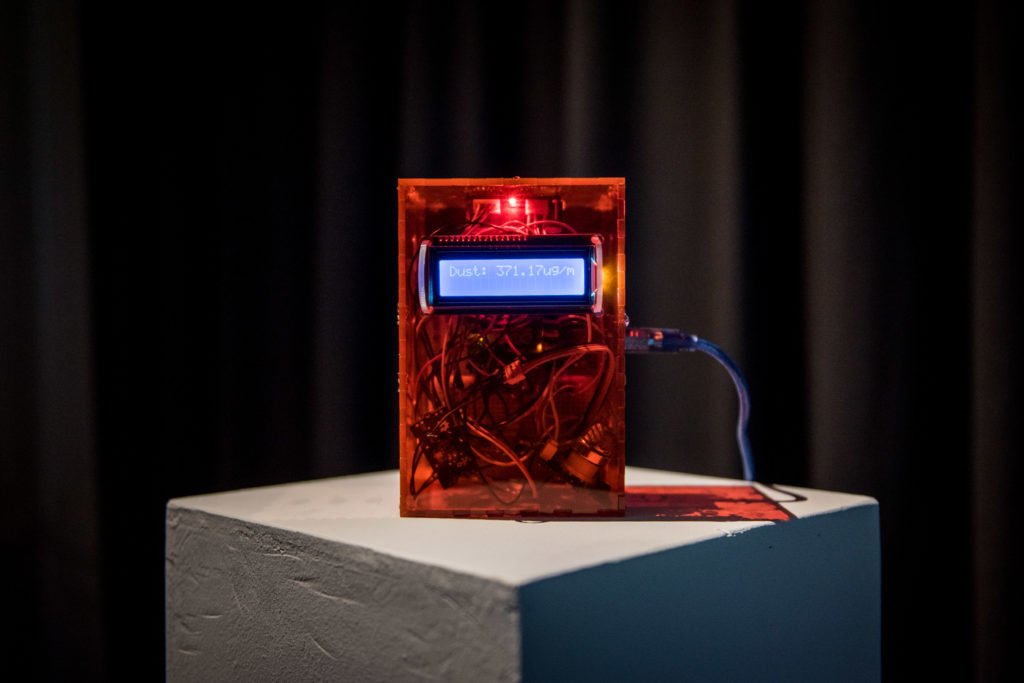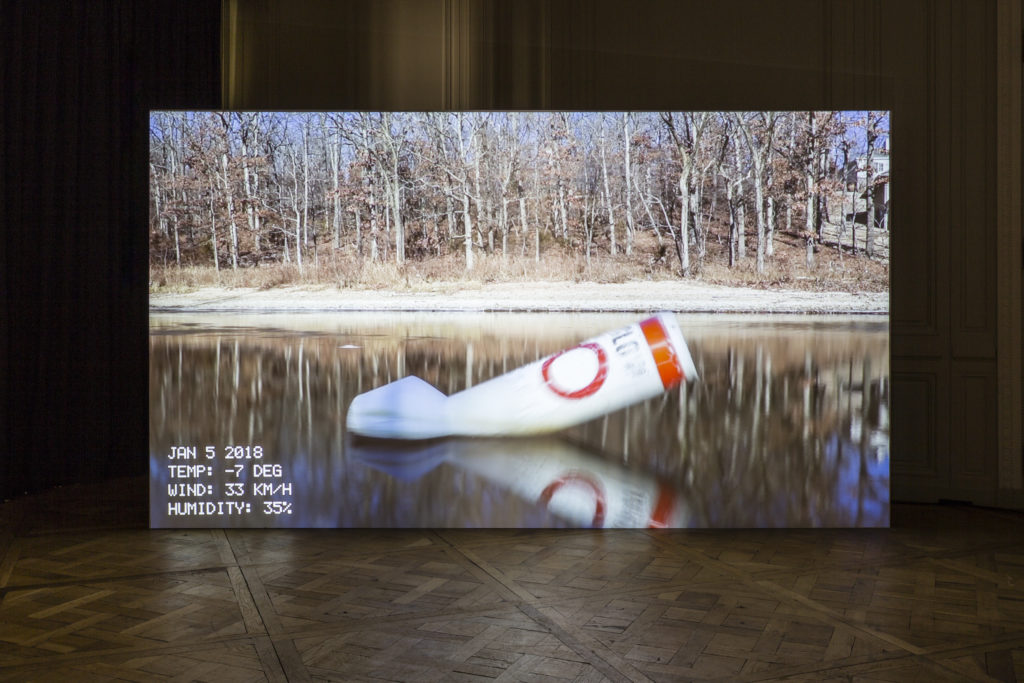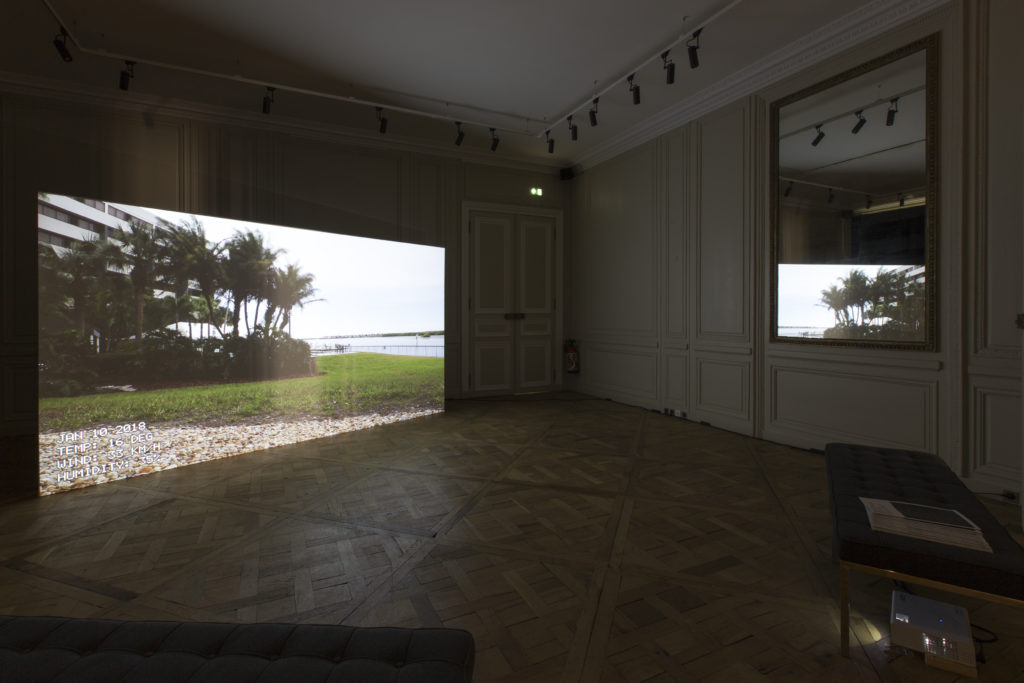A Study of Scarred Landscapes is the culmination of an artistic inquiry into how humans coexist with natural environments. To study these “scarred landscapes,” I built an open source multi-layered pollution sensing device allowing the user to interact with the environment by revealing invisible information about the land. The device is a tool of engagement for the user to investigate different landscapes, as well as a scientific tool for collecting environmental data. This instrument of interpretation creates generative sounds based on the data collected combined with sound recordings of the investigated spaces. The generated sounds are deep and electronic, referencing the artificial nature of the pollutants they represent. Depending on the pollution levels of the area, the sounds range from low and steady to aggressively high frequency. Accompanying the generative sounds are short films of each location as I experienced it during my study.
This project explores the individuals experience of their surrounding environments by using tools I created to extend their senses in order to reveal invisible human impacts. I question how we can use DIY sensing technologies in order to augment our exploration of natural environments on a personal scale. Similarly, the art of sonification allows the user to understand the sensorial inputs in a non-numerical way, by creating a data-driven soundscape to encourage users to question how they understand data, and how data can become a sensorial experience. Instead of criticizing human interventions, I invite the visitors to consider their individual experiences in blended environments, and ask themselves where they draw the line between “natural” and “scarred” landscapes.
